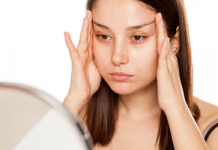When you’re stung by a bee or a wasp, you don’t think whether there is a difference, it’s equally painful. However, the reaction is unique, especially if you are allergic to insect stings. It is therefore important to know the basics of the first aid. Just follow our treatment tips.

The first aid for a bee or wasp sting requires immediate removal of the sting. But if a bee sting is always left in the body, the wasp sting is left there in very rare cases. So if you feel pain, the place of the sting itches and is red and swollen, but the sting itself is not found, try to squeeze out the poison from the wound.
Once the poison is removed, take antihistamine drugs according to the age and, if necessary, some painkillers (aspirin, ibuprofen, acetaminophen). Wash the place of the sting with soap and cold water, apply a cotton swab moistened with ammonia or hydrogen peroxide; you can use saline solution. Then attach an ice pack or a towel soaked in cold water to the affected place, it will reduce pain and relieve swelling. Drink much fluid, take medicine to reduce fever if necessary.
A bee or a wasp sting is usually not life-threatening, but if you are allergic to these insects’ poison, the consequences can be very serious. The symptoms of an allergic reaction include nausea, fever, swelling, hives, trouble breathing, blue lips and face, choking, convulsions, shock and unconsciousness. In this case, emergency medical assistance is needed, especially if you are stung in the throat area or you have swallowed the insect. While the ambulance is coming cover the person with a blanket, put heaters around him or her, give some hot water, 2 dimedrol tablets and 25-30 cordiamin drops.










